Contents
A mid-engine layout has many advantages. The engine, a car’s heaviest component, is placed in the vehicle’s center. So a mid-engine sports car remain stable, distributing weight to all four wheels. The front-to-back weight distribution—ideally, 50-50—means greater traction when taking a corner at speed and a smoother ride. But what’s the best way to find an affordable sports-car model with a mid-engine design?
Mid-Engine Sports Cars for the Masses
Traditionally, mid-engine layouts have been expensive to pull off. They were mostly reserved for supercars. Great mid-engine cars, none of them for the economy minded, include the Acura NSX, Alfa-Romeo 4C, Audi R8, BMW i8, Bugatti Chiron, and the new Corvette—and that’s just the A-B-Cs.
Porsche and Fiat ushered in a new era of affordable mid-engine cars beginning in 1970. More recently, a new mid-engine sports car is a bit more commonplace at different price points. Corvette went mid-engine as recently as 2020, but demand is huge, and prices start at $59,995.
The used car market offers new possibilities for the astute buyer. Today, it’s entirely possible to buy a great mid-engine sports car on eBay Motors for less than $10,000. They aren’t Concours examples, and they might require work. But a sub-$10k mid-engine sports car will provide just as much fun as many exotic models.
Keep an eye on these four models, although example below $10,000 can present compromises and require patience to locate.
1984-2006 Toyota MR2
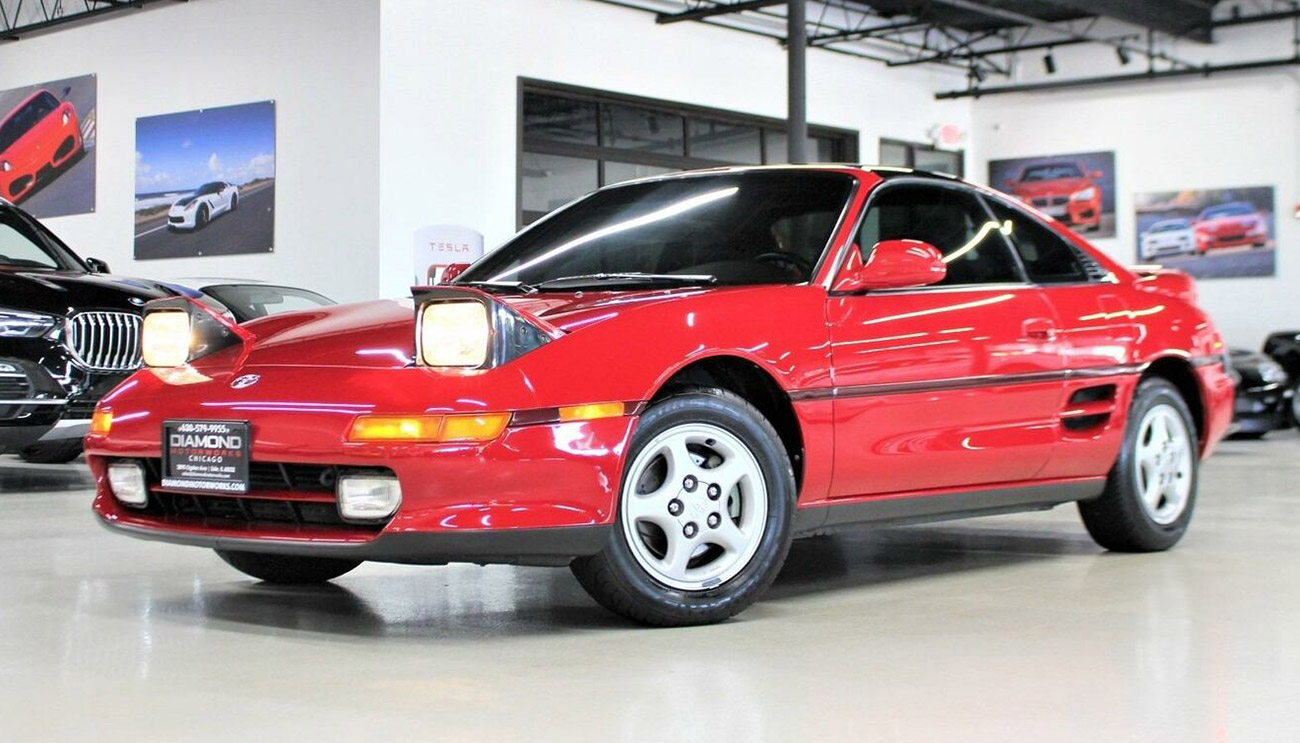
Toyota’s second-generation MR2 is a GT with Ferrari-like looks.
The MR2 is often called the “Mister Two.” The coveted mid-engine, rear-wheel-drive model came in three generations, all quite different.
The first generation was a little wedge-shaped runabout. After 1986, it was available with a Targa (removable) top. Many of the available examples are affordable because they’ve been driven into the ground.
Toyota borrowed components from the Corolla, including the engine, MacPherson strut suspension, and switchgear. The mid-engine package made for a nicely balanced car that is very fun to drive—with a low seating position. Race legend Dan Gurney helped with fine-tuning the car.
The engine is a gem—a twin-cam, 16-valve four that produced 112-horsepower. You’ll want the five-speed manual, though there was an optional automatic. The lightweight, 2,300-pound car could reach 60 mph in 8.4 seconds in stock form. The MR2 got even faster when a supercharged version (with 145 horsepower) was offered beginning in 1987.
The US got the Mark II version, an upgraded mini GT, as a 1991 model. This is the one that collectors tend to want, although it’s heavier and no longer a pocket rocket. The standard inline 2.2-liter four produced 130 horsepower, but a 200-horsepower Turbo version is probably outside our $10k price ceiling. Sixty came up in 5.8 seconds with that one.
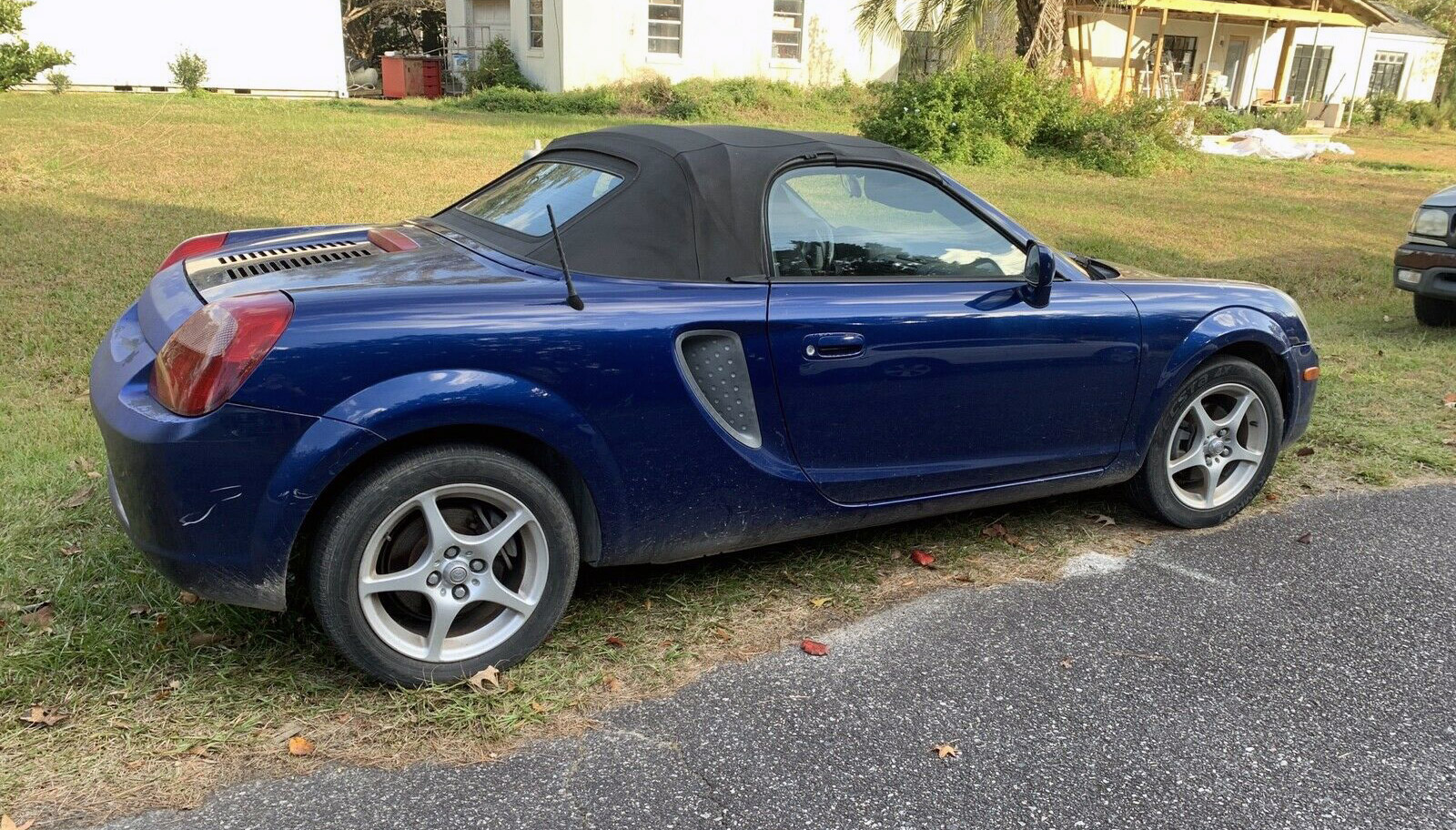
This 2000 Toyota MR2 Spyder has flaws, but will likely sell well below $10,000.
The rarest variant is the cute Mark III MR2 Spyder that arrived in 2000. Think of them as something of a return to the original concept since they weigh only 2,200 pounds and make do with 138 horsepower from an all-aluminum four. The styling holds up, with some resemblance to the Porsche Boxster.
1985-1988 Pontiac Fiero
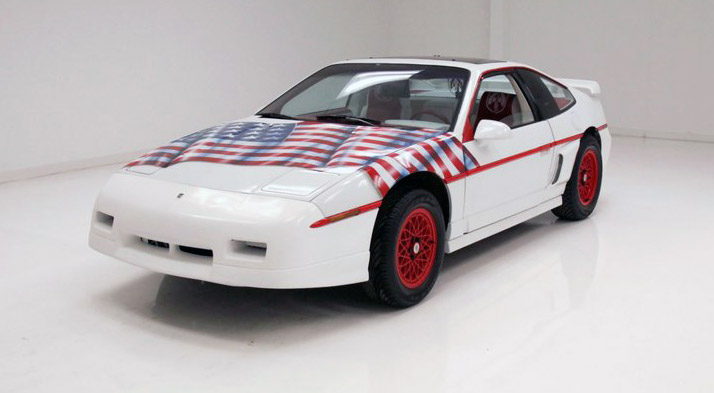
Pontiac’s Fiero was a brave step for GM in 1984.
The Fiero was designed to be a fuel-efficient commuter car. Its space-age injection-molded thermoplastic body was ahead of its time. More than three decades later, the design still looks relatively modern.
The mechanics, including a 2.5-liter “Iron Duke” four-cylinder engine with just 92 horsepower and off-the-shelf Chevrolet suspension, weren’t all that impressive. The plan was to have it V-6-equipped from the beginning, but GM did not offer one until the 1985 GT model. Buyers liked the increase in power.
The 2.8-liter V-6 put out 140 horsepower and 170 pound-feet of torque, shifting via a Muncie four-speed manual (later, a Getrag five-speed). So equipped, it was a decent performer and quieted the doubters.
eBay has about 20 Fieros for sale, and a dozen or so are the GT model. A few low-mileage cream puffs are outside the $10k price range, but there are also Fieros with bidding below $4,000.
Build quality was not outstanding at GM then, but owners mostly sorted things out by now. Fiero parts are readily available on eBay to keep improving on the original.
Shop for Pontiac Fiero cars1974-1982 Fiat X1/9
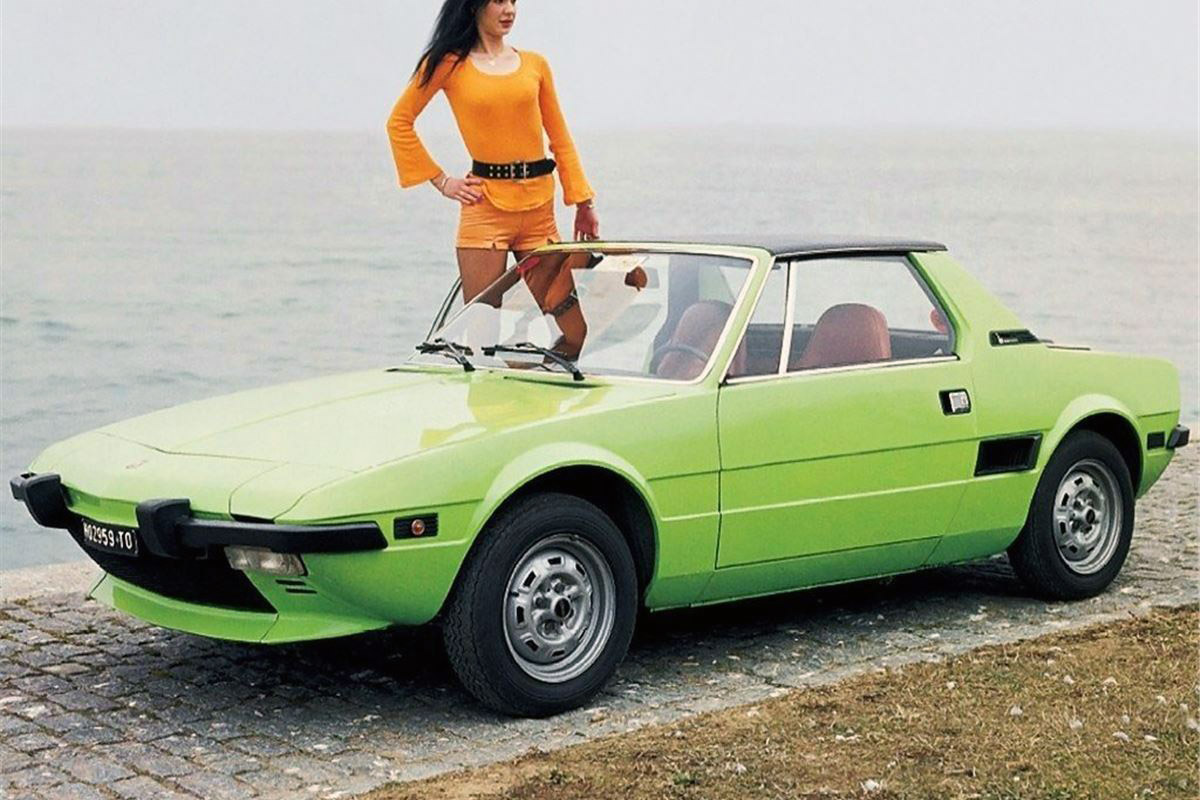
The Fiat X1/9 was radical-looking in 1972.
The X1/9 replaced the conventional rear-engine Fiat 850 Spyder, a beautiful little jewel of a car that unfortunately rusted almost from new.
The new vehicle was breathtakingly modern for the period, with knife-like wedge styling from Marcello Gandini at Bertone—the same guy who did the timeless Lamborghini Miura.
The car had a bigger engine than the 850, but it was still a tiny 67-horsepower 1.3-liter four with 67 horsepower. It takes a while to get to 60 mph, but it handles like a little go-kart. Specifications include four-wheel discs and a four-speed manual.
The mid-engine layout meant storage both front and back. And there was also a removable Targa roof panel.
Five-mile-per-hour bumpers didn’t do much for the styling in 1975. But 1979 brought a welcome power increase from a Strada-based 1.5-liter engine. Fiat added Bosch fuel injection in 1980, but the marque left the American market after 1982.
X1/9s for sale don’t come up often. But there are plenty of X1/9 parts available on eBay.
1970-1976 Porsche 914
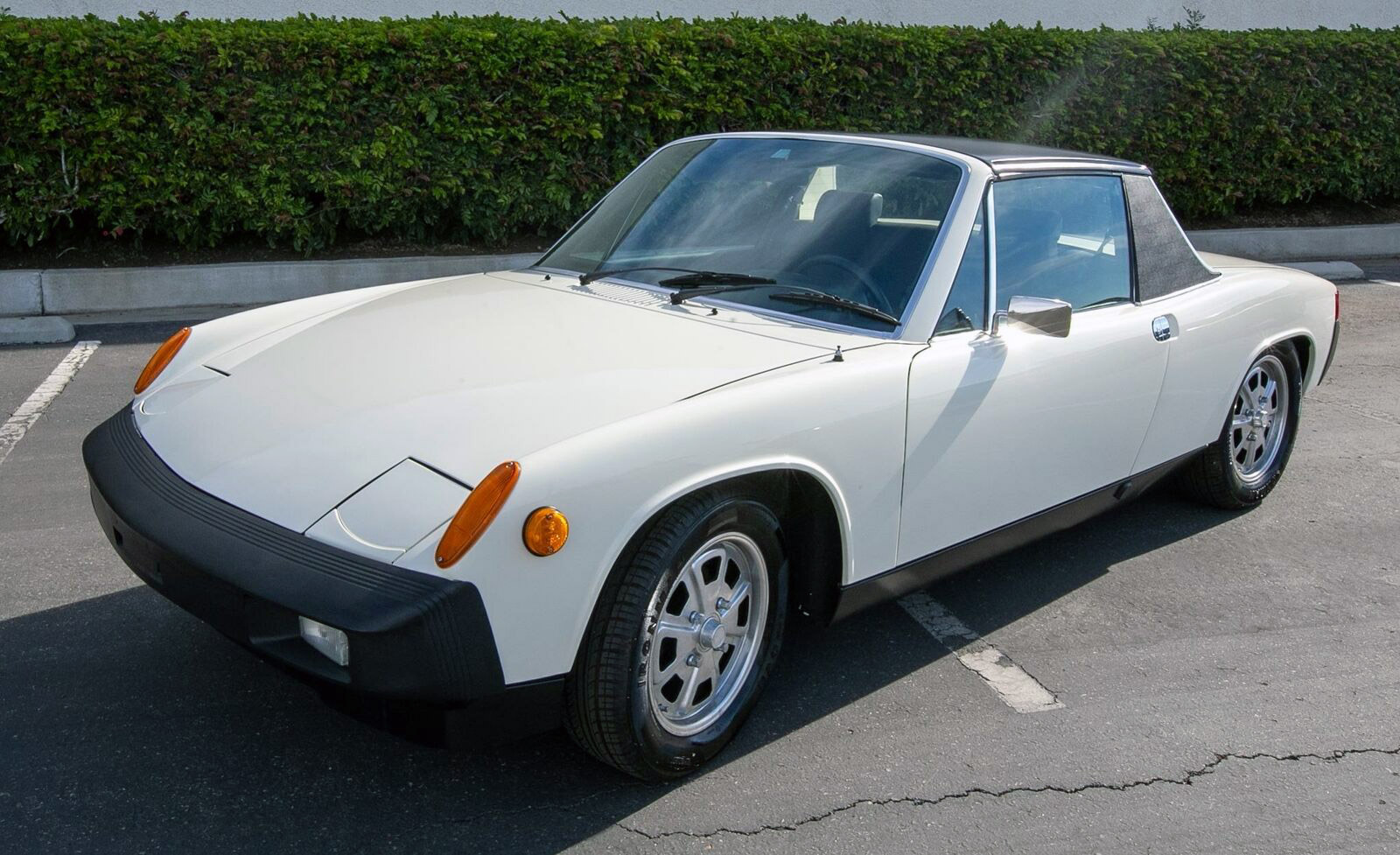
Values of the Porsche 914 are rising rapidly. The six-cylinder variant is outside our price consideration.
The Volkswagen Group includes VW, Audi, and Porsche, so there has always been cross-pollination. The Porsche 914 expressed the company’s desire to get something cheap and cheerful out there. The 914 could have been marketed as a VW in the US, but the marketing team saw the value of the Porsche name. The cars were sold as VW-Porsches in Europe.
The basic formula is the same as the X1/9 and MR2. It’s small and lightweight, with excellent handling via a midship engine. The 1.7-liter flat-four was distinctly underpowered for a Porsche, though the low weight and fuel injection added zip.
The four-cylinder engine eventually grew to two liters, so that’s the performer in the bunch. All 914s are good handlers, but critics point to a vague shift feel.
Nonetheless, Hagerty includes the 914 in its 2020 list of cars likely to appreciate. So, if you want one below $10,000, you better grab it now. eBay has about 30 914s for sale, starting with a $3,800 project.
Shop for Porsche 914 cars




